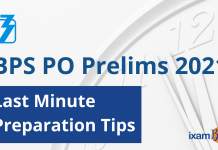Being a serious aspirant of RBI, SEBI, NABARD exams, you very well know the importance of being fully acquitted with the current affairs. One can see an increasing trend in competition in these three exams year on year. RBI, NABARD, SEBI exams are quite tough and therefore each and every mark counts in your final selection.
Let us look at one such current trending topic which is very important for RBI, SEBI, NABARD exams:
US – INR SWAP
The last quarter of a financial year has been generally exciting in the economy and RBI has been adding surprises of its own in the last 2 years. In 2017-18, it was the famous (or rather infamous, the banks would say) “February 12” circular that shocked the banking system and the markets by taking away the luxury of restructuring bad loans and/or carrying them on the books till eternity.
This time, though, the surprise has been a pleasant one for the banks. In March 2019, RBI decided to inject rupee liquidity for a longer duration through long-term foreign exchange Buy/Sell swap as against using the age old tool of Open Market Operations (OMO) for this purpose. Initially it seemed like a one-time activity by RBI; however, given the announcement of another round of the swap deal in April 2019, RBI seems to have found a more durable tool to inject liquidity in the system without disturbing the SLR investments of the banks.
What is the RBI Swap deal??
- The swap is in the nature of a simple buy/sell foreign exchange swap from RBI’s side.
- A bank shall sell US Dollars to the Reserve Bank and simultaneously agree to buy the same amount of US Dollars at the end of the swap period.
- The settlement of the first leg of the swap will take place on spot basis on the date of a transaction whereby RBI will credit the Rupee funds to the successful bidder and the bidder needs to deliver US Dollars to RBI.
- In the reverse leg of the swap transaction, Rupee funds will have to be returned to RBI along with the swap premium to get the US Dollars back.
- The swap premium, which will decide the exchange rate at which the banks will buy back the same amount of USD at the end of the swap period, is decided through the auction mechanism. In the auction, the banks bid for the forward premium they are willing to pay to RBI to buyback the USD at the end of the swap.
- In the first swap deal, the cut-off premium has been decided at Rs.7.76 i.e. the banks will have to buy back the dollars from RBI after 3 years at a rate that is Rs.7.76 above the spot rate at which they sold the dollars to RBI today.
| The Rupee/USD Swap –March ‘19
(Concluded)
|
| The Rupee/USD Swap – April ‘19
(Upcoming)
|
The overall impact of the swap deal
The swap deal will have an impact on both the money and forex market as follows:
- Increase in liquidity in the system
- Prevent excessive appreciation of rupee
- Reduce hedging cost for importers/borrowers of forex loans
- Reduce bond yields
In the near term, the benefits from this new liquidity tool look aplenty, and one may feel that this should now be the RBI’s favorite liquidity management mechanism. Well, it is not as simple as it looks. In the first swap deal, banks had offered to swap USD 16.31 billion against RBI’s swap offer for USD 5 billion. These excess USD were mostly borrowed from overseas market and led to disturbances in the spot currency market after the conclusion of the swap transaction. Moreover, the impact of the deal on the liquidity of banks at the end of the swap tenure (after 3 years) will be known only then.
The markets may be enthused as of now, but RBI, as the protector of long term financial stability in the economy, will have to use the USD/INR swap tool judiciously.
How easy it would be if you get all such trending topics at one place and with such detail and understandable explanation??
Subscribe to our Comprehensive COmbo Course for RBI Grade B, NABARD Grade A/B, and SEBI Grade A exams and get all such exam oriented trending topics and many more at one place.
About the Author Prachi Agarwal Ma’am:

Prachi Agarwal is an MBA (Finance) from BIMTECH, Noida and B. Com (Hons) from Hansraj College, Delhi University. She has previously worked with CARE Ratings. At ixamBee, she is faculty for Financial and Management and Securities Market Awareness. Her expertise topics are Ratio analysis, risk management, bond valuation, etc. She is the student’s favorite faculty for her easy to understand approach while teaching in Live Classes.
RBI, NABARD, SEBI exams are difficult to crack, however, proper guidance from experts will help you increase your probability of selection by 3 times. Our experts, ex-RBI, ex-Bank PO’s, through our RBI, NABARD, SEBI Course will help you prepare for the three exams in a smart way.
Click Here to know about RBI, SEBI, NABARD Combo Online Course
Get Free Online Test Series, GK updates in form of Beepedia, BeeBooster, as well as latest updates for Bank PO, Bank Clerk, SSC, RBI, NABARD, and Other Government Jobs.
100% займ на картузайм на киви быстрозайм у петровича онлайн















